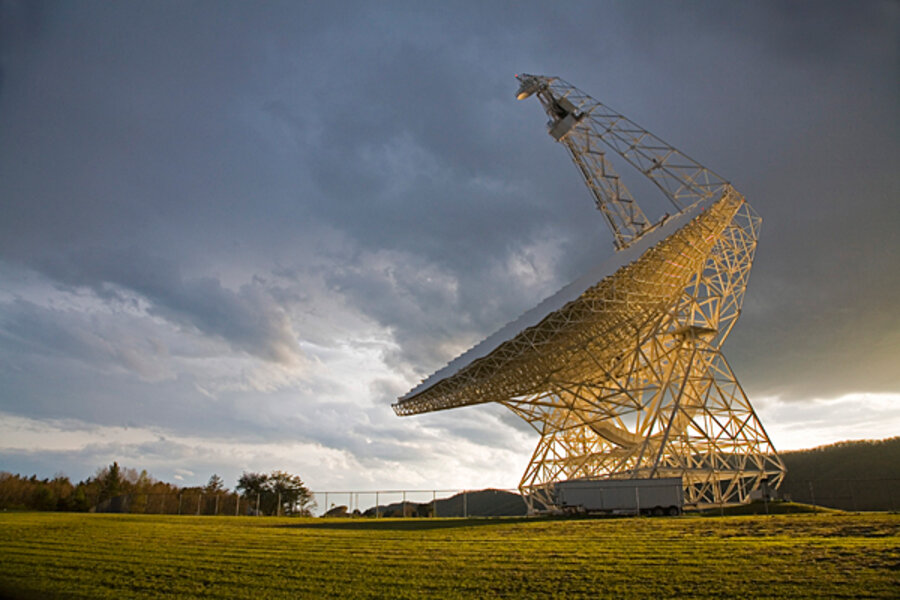Does dark energy exist? New telescope technique could find out.
Loading...
A new radio telescope technique has allowed astronomers to glimpse distant reaches of the universe and could help answer some fundamental cosmic riddles, such as whether mysterious things like dark energy really exist.
Dark energy is believed to constitute nearly three-fourths of the mass and energy of the universe. It is also thought to be responsible for the speeding up of the universe's expansion. Yet scientists still aren't sure dark energy even exists.
That could change someday if astronomers are able to gather enough data from the distant parts of the universe and precisely measure large-scale cosmic structures.
The new technique allowed astronomers to observe radio light from hydrogen gas dating from when the universe was about half its current age. This was the farthest scientists have ever observed such gas.
This signal originates from the matter-energy soup of the extremely early universe. These radio waves could have left detectable effects on the large-scale distribution of galaxies, scientists think.
Deep universe up close
The new technique allows astronomers to measure such imprints by observing the radio emission of hydrogen gas. The method, called intensity mapping, could eventually reveal how such large-scale structure has changed over the last few billion years, giving insight into which theory of dark energy is the most accurate.
"Our project mapped hydrogen gas to greater cosmic distances than ever before, and shows that the techniques we developed can be used to map huge volumes of the Universe in three dimensions and to test the competing theories of dark energy," said Tzu-Ching Chang, of the Academia Sinica in Taiwan and the University of Toronto.
The researchers used the National Science Foundation's giant Robert C. Byrd Green Bank Telescope (GBT) in Green Bank, W. Va. They aimed the observatory at a region of sky that previously had been surveyed in detail in visible light by the Keck II telescope in Hawaii. This visible light survey used spectroscopy to map the locations of thousands of galaxies in three dimensions.
With the GBT, instead of looking for hydrogen gas in these individual, distant galaxies – a daunting challenge beyond the technical capabilities of current instruments – the team used their intensity mapping technique to accumulate the radio waves emitted by the hydrogen gas in large volumes of space including many galaxies.
"Since the early part of the 20th century, astronomers have traced the expansion of the universe by observing galaxies," said co-researcher Jeffrey Peterson of Carnegie Mellon University in Pittsburgh, Pa. "Our new technique allows us to skip the galaxy-detection step and gather radio emissions from a thousand galaxies at a time, as well as all the dimly-glowing material between them."
Filtering out interference
The astronomers also developed new processes to remove both manmade radio interference and radio emission caused by more-nearby astronomical sources, leaving only the extremely faint radio waves coming from the very distant hydrogen gas.
"These observations detected more hydrogen gas than all the previously-detected hydrogen in the Universe, and at distances ten times farther than any radio wave-emitting hydrogen seen before," said co-researcher Ue-Li Pen of the University of Toronto.
The team first proposed their intensity-mapping technique in 2008, and their GBT observations were the first test of the idea.
"This is a demonstration of an important technique that has great promise for future studies of the evolution of large-scale structure in the Universe," said National Radio Astronomy Observatory chief scientist Chris Carilli, who was not part of the research team.
The new technique is detailed in the July 22 issue of the journal Nature.





